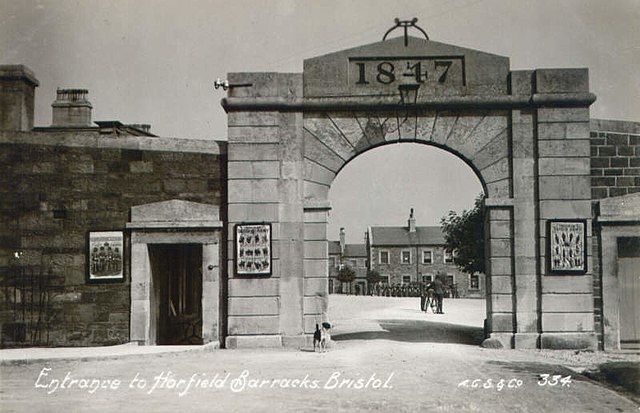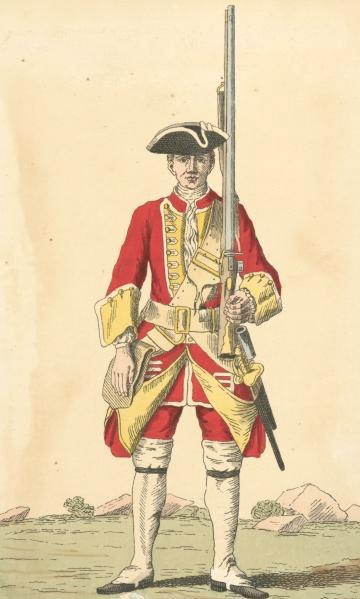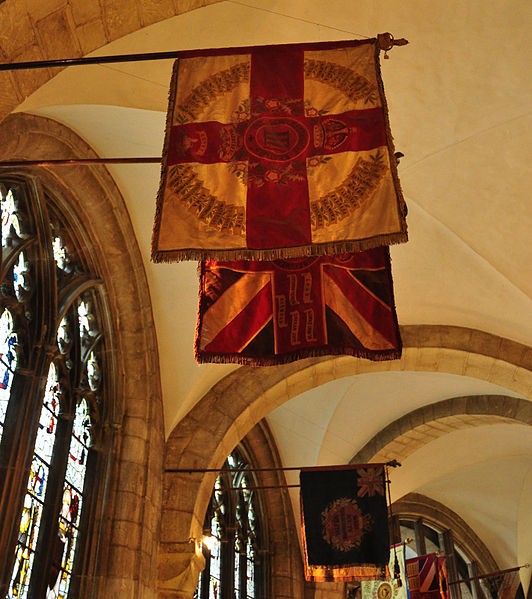The Gloucestershire Militia was a part-time military force in the county of Gloucestershire in the West of England. From their formal organisation as Trained Bands in 1558 until their final service as a Special Reserve unit of the Gloucestershire Regiment in World War I, the Militia regiments of the county served in home defence in all of Britain's major wars.
Cecily Hill Barracks today, formerly the headquarters of the Royal North Gloucestershire Militia.
Cap badge of the Gloucestershire Regiment.
Horfield Barracks, Gloucester, regimental depot of the Glosters.
The Gloucestershire Regiment, commonly referred to as the Glosters, was a line infantry regiment of the British Army from 1881 until 1994. It traced its origins to Colonel Gibson's Regiment of Foot, which was raised in 1694 and later became the 28th Regiment of Foot. The regiment was formed by the merger of the 28th Regiment with the 61st Regiment of Foot. It inherited the unique distinction in the British Army of wearing a badge on the back of its headdress as well as the front, a tradition that originated with the 28th Regiment after it fought in two ranks back to back at the Battle of Alexandria in 1801. At its formation the regiment comprised two regular, two militia and two volunteer battalions, and saw its first action during the Second Boer War.
Uniform of the 28th c. 1742 with its yellow facings
The 28th Regiment at Quatre Bras
The regimental colours in Gloucester Cathedral
The Relief of Ladysmith by John Henry Frederick Bacon. The Gloucestershire Regiment was blooded at Ladysmith, and the survivors helped defend the city until its relief on 1 March 1900.







